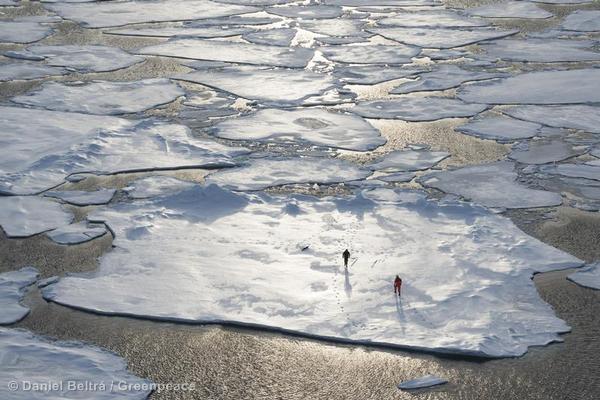Climate Change in the Artic

(Image Credit: Daniel Beltrá / Greenpeace)
January 16, 2021
Nowhere is climate change more obvious than in the Arctic, and the Arctic helps to regulate the world’s temperature, so as more Arctic ice melts the warmer our world becomes. For the people and animals that live in the Arctic’s unique environment, climate change is not a debate, it’s a daily reality. And with the world growing warmer, Arctic ice is melting even faster, threatening their safety and way of life. In the past 30 years, we’ve seen areas of Arctic sea ice melt that are larger than Norway, Sweden, and Denmark combined. A recent analysis of Arctic sea ice conditions paints a grim picture. According to Oceantoday.gov, the summer sea ice minimum extent has dropped to its smallest size in recorded history. It’s now below 3.41 million square kilometers or 1.32 million square miles. Rapidly changing conditions are heavily impacting the animals that inhabit the Arctic, polar bears are losing their homes, and as the sea levels shrink, they are losing their food source as well. The growing intensity of summer temperatures across the region is destabilizing giant subterranean ice blocks that have remained frozen for millennia. Rapid thawing could release vast quantities of heat-trapping gases, further exacerbating the rise in the atmosphere’s temperature.
Unfortunately, rising temperatures are not the only crisis occurring in the arctic. In August 2020, the Trump administration approved a full gas and oil drilling plan that would make 1.5 million acres of the preserved natural lands available for drilling. In order to boost the economy and bring jobs to local people. That wouldn’t upstage the fact, however, that doing so would harm the native Gwich’in people and hundreds of species of animals that call the refuge home. At the end of 2020, oil and gas companies nationwide submitted their bids to secure leasing rights over the Arctic refuge’s coastal plain for oil and gas drilling, according to Ecowatch.com. Although it’s unclear which energy companies ultimately sent in a bid, the Trump administration was officially greenlit to start selling the leasing rights as of Wednesday, Jan. 6, despite ongoing legal battles. Climate experts say there should be no new oil and gas extraction, as the world is already more than 1C hotter than pre-industrial times. Even if humans stopped using fossil fuels today, the planet would continue to heat. Personnel stationed at a military base in Alert, Canada, have experienced the unlikely event of an Arctic heatwave. The settlement, also home to a weather station, has the distinction of being the northernmost permanently inhabited place on Earth.
U.S. District Court Judge Sharon Gleason decided that despite the ongoing controversy, which still has not been resolved in court, the sales can still move forward. Conservation organizations are still aggressively fighting against these actions in court, however, and many hope that once President-elect Joe Biden takes office, he will reinstate protection over the refuge, which he promised as part of his climate initiative.





























































































































Brianna • Jan 19, 2021 at 10:21 am
The situation is really sad but I liked how informational your article was.